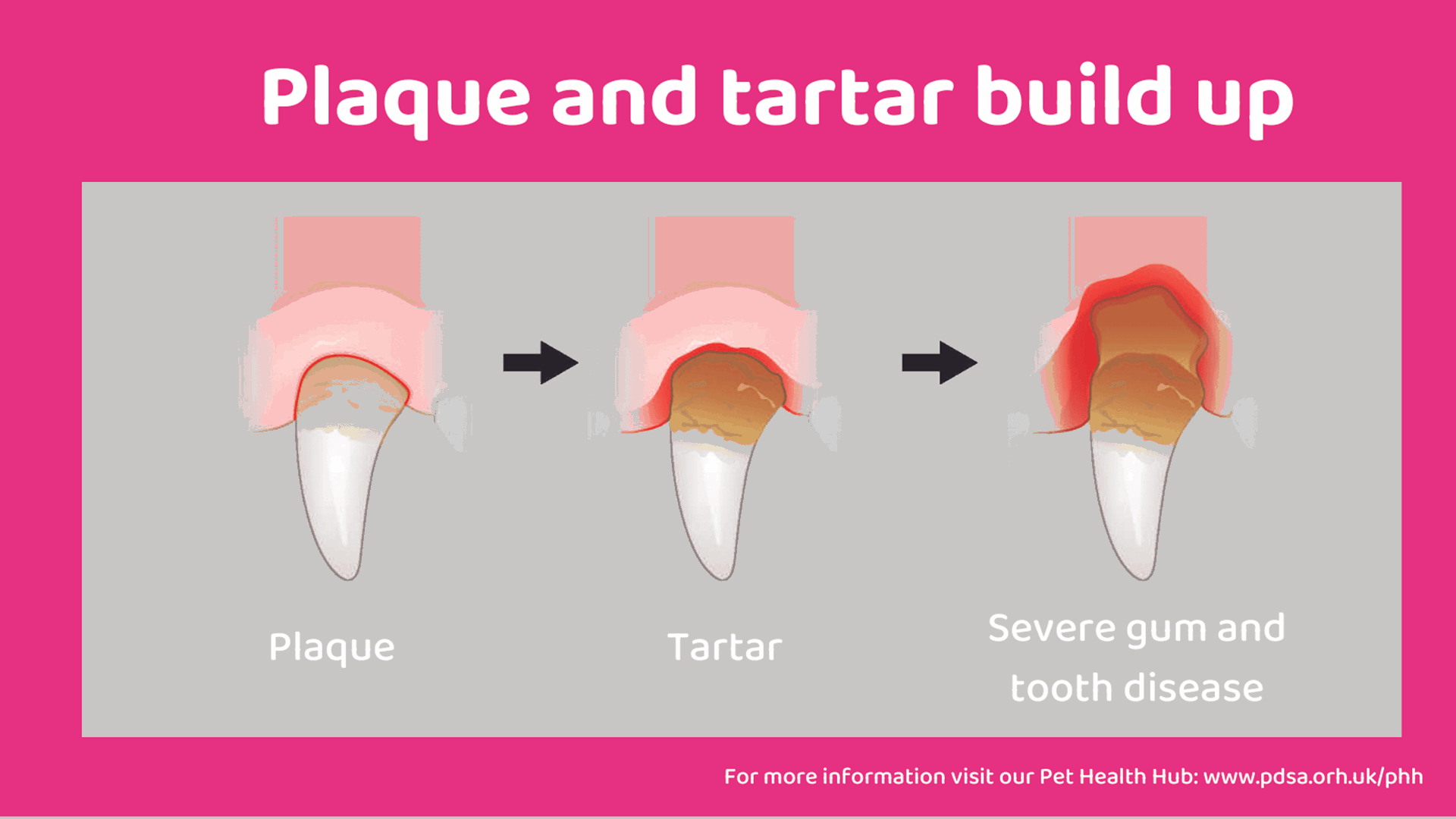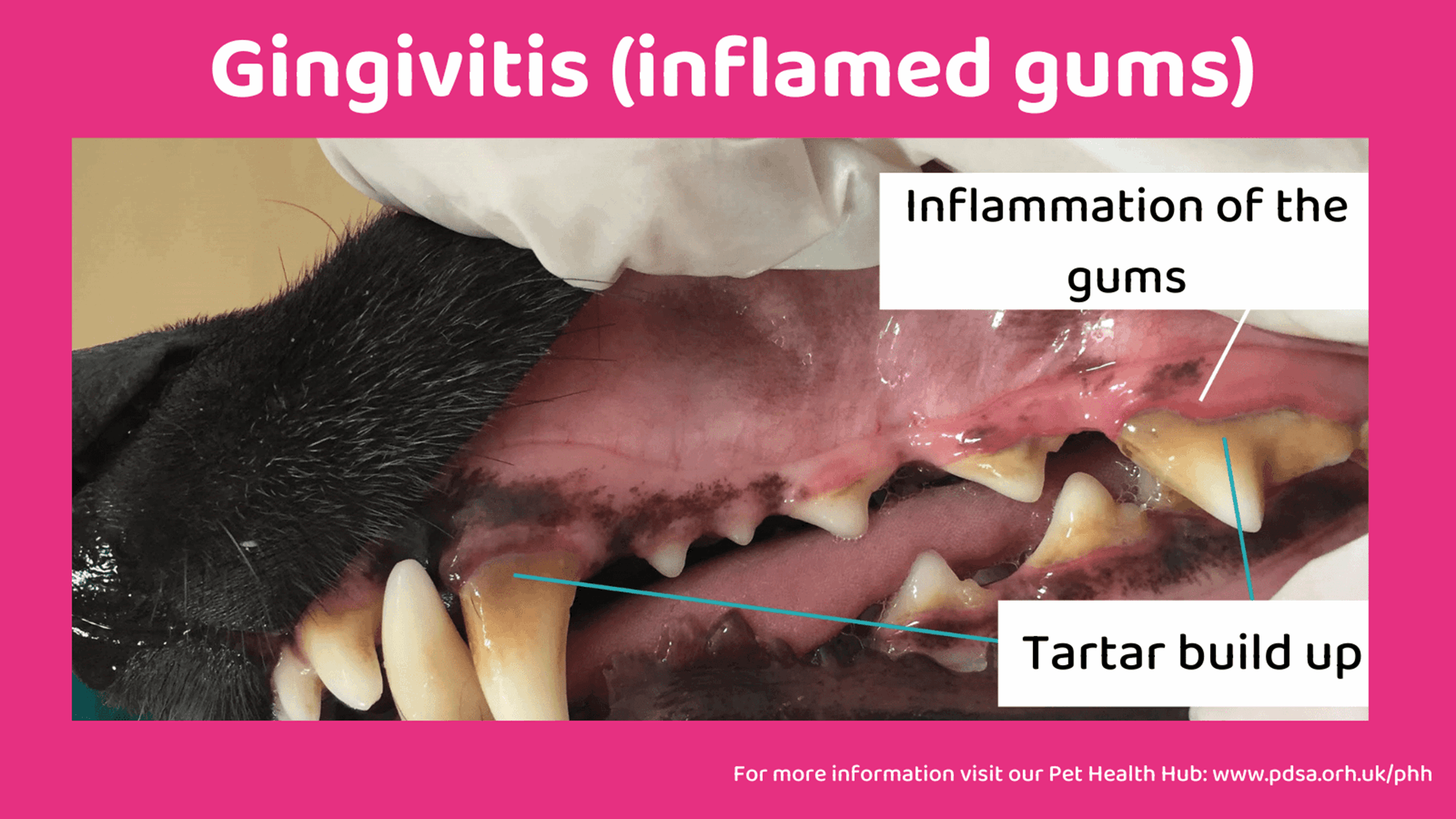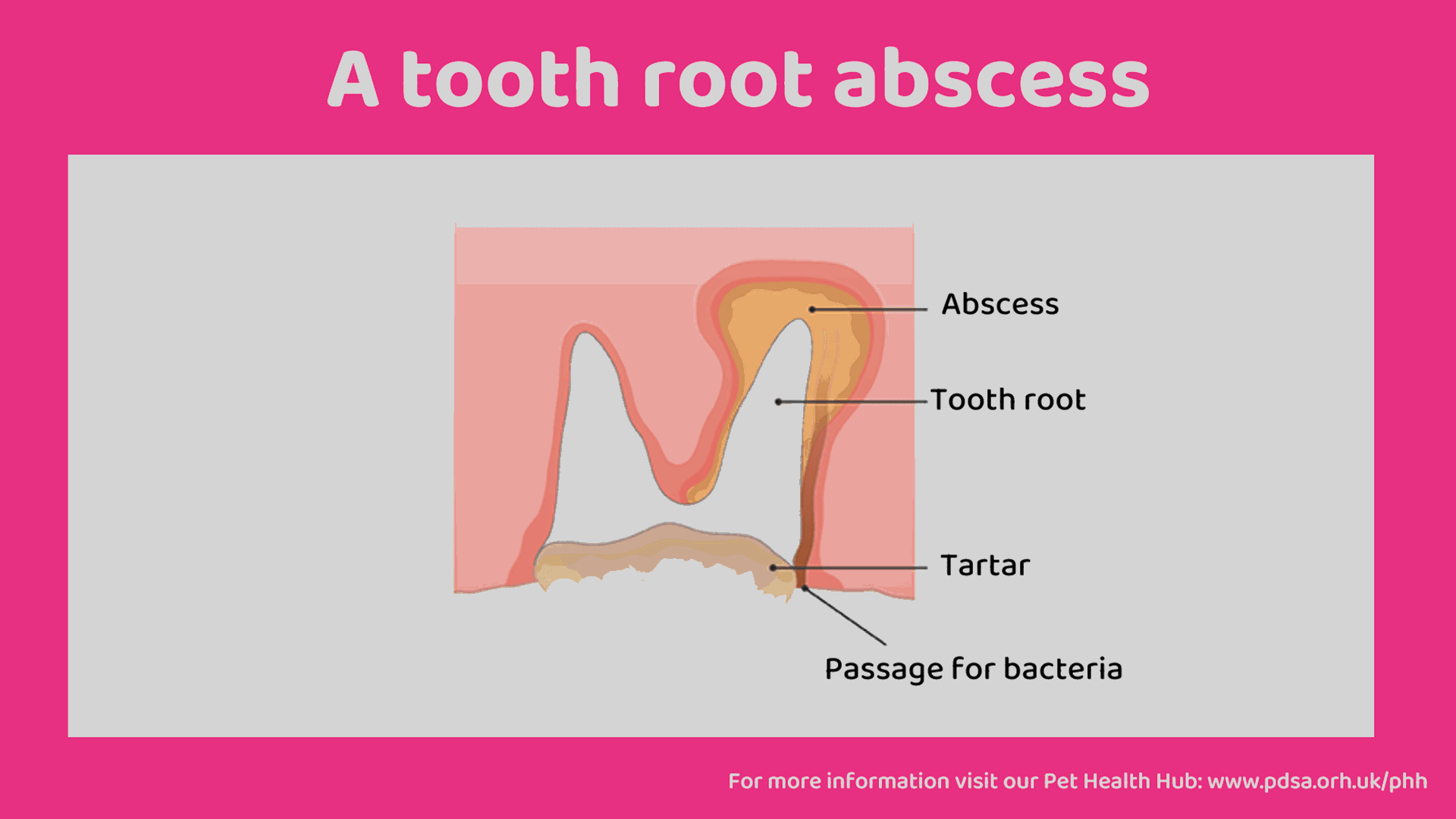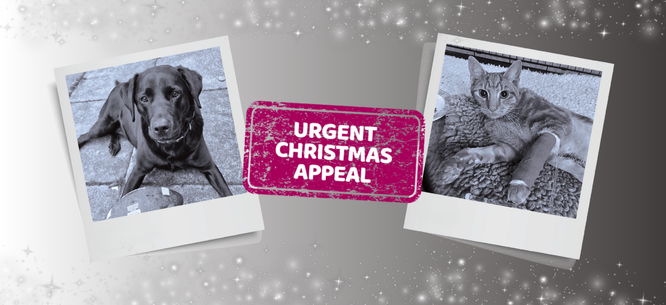Dental disease in dogs
Overview
- Dental (tooth and gum) disease is a painful and common condition in dogs.
- It’s important to check your dog’s mouth regularly because most dogs with dental problems continue to eat even when they are uncomfortable and may not show any symptoms.
- Contact your vet for advice if you notice a problem with your dog’s mouth and have them checked by a vet at least once a year.
- Brushing your dog’s teeth daily will help to prevent problems developing. Poor dental hygiene is one of the most common causes of tooth and gum disease in dogs.
Causes of dental disease
Unfortunately, dental disease is a very common problem in dogs and can be due to:
- Poor dental hygiene – a lack of tooth brushing.
- Age - dental disease is common in older dogs due to wear and tear
- Breed - some breeds are prone to dental disease for example Toy Poodles, Cavalier King Charles Spaniels, Greyhounds, and King Charles Spaniels.
- Diet – having dry biscuits/kibble as part of your dog’s diet may improve oral health.
- Retained baby teeth - your dog’s baby teeth will begin falling out at approximately four months old when their adult teeth start to come through. If their baby teeth don’t fall out, dental problems are more likely due to an overcrowded mouth. Your vet might recommend removing these baby teeth under anaesthetic.
- Overcrowding of teeth - certain breeds may have overcrowding issues due to the size of their mouth being smaller or shorter for example brachycephalic dogs. If these teeth are too close together they are more likely to cause dental disease.
- Trauma - a fractured tooth is often extremely painful and can become infected. Fractured teeth can happen from chewing a hard object or from a head injury for example in a road traffic accident.
Symptoms
Many dogs don’t show any symptoms of dental disease so regular checks at home and with your vet are essential. If they do show symptoms it can include:
- Halitosis (bad breath) – this can also be caused by other things
- Pain or difficulty eating i.e. chewing on one side of the mouth
- Weight loss and decreased appetite
- Plaque and tartar – yellowish brown covering on the teeth
- Red, inflamed, bleeding gums
- Wobbly, missing or broken teeth
- Excessive drooling – sometimes with blood in it
- Preferring soft food to biscuits
- A swelling on the face (can indicate a tooth root abscess)
- Pawing at/rubbing the mouth/face
- Head shaking
- Dropping food from the mouth
Diagnosis
Your vet will ask if your dog has any symptoms and will examine their mouth. Many dogs will be happy to allow an examination of their mouth. If your dog is not happy having their mouth examined, or it is too uncomfortable for them, they may need to have a full check under sedation or general anaesthetic.
Your vet may also suggest doing dental x-rays. Tooth roots make up about 60% of the tooth and because they are usually under the gum and not visible to us they can only be examined by doing x-rays under general anaesthetic.
Some of the most common dental problems that affect dogs are:
Plaque and tartar build up
Plaque is a build-up of saliva (spit), food and bacteria; it collects on teeth and eventually turns into a hard, brown substance called tartar. The tartar damages the teeth, causes painful, inflamed gums (gingivitis), cavities, tooth loss and is full of bacteria that can enter the blood and cause problems in the kidneys, heart and liver.
Gingivitis (inflamed gums)
Gingivitis (inflamed gums) is a painful condition usually caused by plaque and tartar build up. It causes the gums to become red, sensitive and bleed easily.
A tooth root abscess
A tooth root abscess is an infection around a tooth root that develops when bacteria get underneath the gum. Tooth root abscesses are very painful and often cause swelling on the side of the face (just under the eye).
Cracked or broken teeth
Teeth are very solid and don’t break easily, however, if they are weakened by dental disease or knocked, they can sometimes crack. Always contact your vet if your dog breaks or cracks a tooth - damaged teeth are often extremely painful and vulnerable to infection. We advise against feeding your dog bones and other very hard chews because they can cause slab fractures (when a large chunk of tooth breaks off and exposes the inside of the tooth).
Treatment
Treatment for dental disease depends on the specific problem, but is likely to include:
- A dental procedure - most dogs with dental disease require a dental procedure. The only way to safely do this is under general anaesthetic. This can range from a simple scale and polish to tooth removal of any teeth that are loose, infected or fractured. It can be difficult for your vet to estimate how many teeth will need extracting until your dog has a full examination under general anaesthetic. If your dog needs advanced dental surgery, your vet may advise referring them to a specialist veterinary dentist.
- Pain relief – your vet may prescribe anti-inflammatory pain relief to make your dog’s mouth more comfortable.
- Antibiotics – most dental infections can be treated with a dental procedure and pain relief so in many cases antibiotics are not needed. There are some situations where your vet might advise that your pet is on antibiotics before, during or after the procedure to help fight infection.
- Long term treatment – your vet will discuss suitable aftercare tailored to your dog to prevent any future build-up of plaque. This is likely to include daily teeth brushing once they have healed from their dental procedure.
Prevention
Daily tooth brushing
Brushing away plaque before it turns into solid tartar is the best way to prevent dental disease. Check out our video ’How to brush your dog’s teeth’.
You can buy pet-safe toothbrushes and toothpaste for your dog. It’s important to use pet toothpaste as it is safe for your dog to swallow. It’s a good idea to start brushing your dog’s teeth when they’re young so they get used to it as part of their routine. It’s never too late to start though, and many older dogs will get used to it in time too. Use positive reward-based training, take things slowly and get them used to having their teeth cleaned over a few weeks:
- Let them taste their new dog-safe toothpaste so they think of brushing their teeth as a treat, not a chore.
- Get them used to having their mouth touched. You can do this by gently rubbing a soft cloth along their gums and giving them a reward or praise each time they allow you to do it.
- Gradually move on to using a brush that fits over your finger. This will get your dog used to the feeling of their teeth being brushed.
- When your dog’s comfortable and ready, use a proper dog toothbrush. The longer handle will help you reach all of their teeth.
- A regular daily brushing or at least three times a week will significantly reduce the risk of your pet suffering serious problems or needing frequent general anaesthetics to treat advanced dental disease.
Some dogs may not tolerate their teeth being brushed despite going through the steps slowly and using reward based training. Never put yourself at risk, if your dog is unhappy with you touching their mouth, don’t push it. Although brushing their teeth is the best way to prevent dental disease, there are other ways of looking after their dental hygiene such as regular checks and dental toys and chews.
Check-ups
Regular dental check-ups with your vet will help to spot dental problems quickly. A good time for a check is at their annual vaccination/booster.
Dental toys and chews
Encourage your dog to chew on dental toys and chews that help clean the teeth and gums and may help to prevent dental disease. Always supervise your dog with any toy or chew and include chews in their daily food allowance to prevent weight gain. Extra chews or treats shouldn't make up more than 10% of your pet's daily food allowance.
Diet
Feeding some dry biscuits as part of your dog’s meal is thought to be slightly better than feeding wet food only because they can physically remove some of the plaque as your dog chews. However, this is not a substitute for brushing your dog’s teeth.
Mouthwash and antibacterial gels
Mouthwash and antibacterial gels may help reduce plaque deposits and prevent infection. Special dog-safe mouthwash can be added to your dog’s drinking water to help keep their mouth clean. Never use human mouthwash or antibacterial gels on your dog. As there are many different products available to buy, it’s best to discuss with your vet which ones are most effective for your dog.
When to contact your vet
Contact your vet if you suspect your dog has dental disease. They will have a good look inside your dog’s mouth (which can be very difficult to do at home!)
Contact your vet for an urgent appointment if your dog is unable to close his/her mouth or is in too much pain to eat.
You know your dog best, always contact your vet if you’re concerned.
Cost
Treatment for dental disease can become very expensive, so it’s important to speak openly with your vet about the cost of treatment, your finances, and what you think is right for your dog.
Consider taking out dog insurance as soon as you bring your dog home, before any signs of illness start. This will give you peace of mind that you have some financial support if they ever become unwell.
Some insurance policies may not cover dental treatment or may require you to pay extra to cover it so it’s important to always check what your policy will cover before taking it out.
- Why is my dog still eating when the vet says he/she needs teeth out?
- Will my dog still be able to eat their usual food if they have teeth taken out?
- Can my dog have a dental procedure without going under anaesthetic?
Why is my dog still eating when the vet says he/she needs teeth out?
Many dogs will eat despite having painful, loose or infected teeth. This is because their instinct to eat is still there despite the fact that dental disease is a painful condition.
Will my dog still be able to eat their usual food if they have teeth taken out?
Your vet will advise you on the best diet to give your dog after their dental procedure. Some dogs may need their food to be softened in the first few days or weeks after a dental. Many dogs can go back to eating their usual food even if this was a dry biscuit or kibble.
Can my dog have a dental procedure without going under anaesthetic?
Without going under anaesthetic for their dental procedure, your dog will not be able to have a full and effective examination and cleaning of their teeth including under the gum line. Doing a dental procedure without general anaesthetic, means there is a possibility of damage to the teeth and gums and it may cause pain and distress to your dog. There are parts of the mouth that often cannot be seen without general anaesthetic and this may delay diagnosing and treating any dental problems your dog may have.
Published: April 2024
Did you find this page useful?
Tell us more
Please note, our vets and nurses are unable to respond to questions via this form. If you are concerned about your pet’s health, please contact your vet directly.
Thank you for your feedback
Want to hear more about PDSA and get pet care tips from our vet experts?
Sign up to our e-newsletter
Written by vets and vet nurses. This advice is for UK pets only. Illustrations by Samantha Elmhurst.




